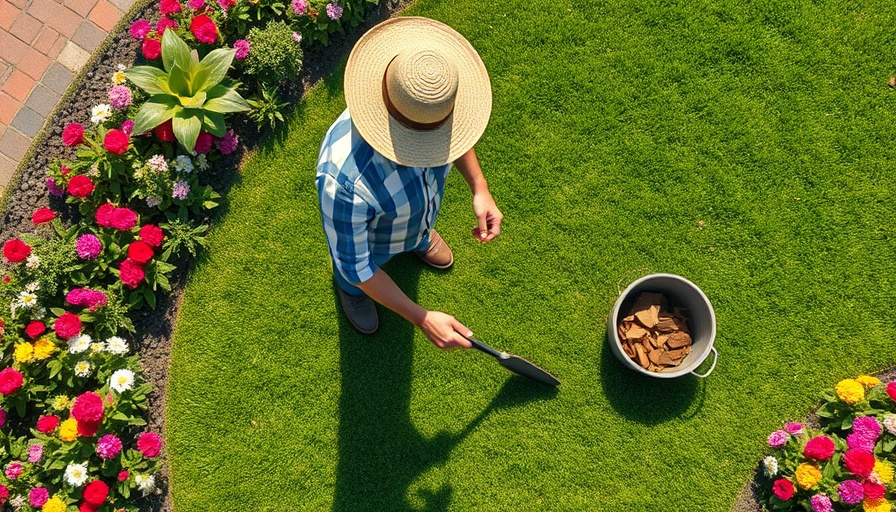
Summer Landscaping: Embrace Sustainability for Your Home
As the temperatures rise and the days stretch longer, summer beckons many to turn their attention to landscaping projects. With increasing drought conditions and water restrictions prevalent in various regions, sustainable landscaping has emerged as a critical solution for homeowners. As observed in Oregon and similar locales, prioritizing eco-friendly practices not only protects the environment but also enhances property aesthetics and value.
The Vital Role of Pollinators
Every summer garden thrives with a little help from pollinators. Bees, butterflies, and hummingbirds are not just beautiful guests in your yard; according to the United Nations, over 75% of the world's food crops rely on these important insects. Sustainable gardening with pollinator-friendly plants can turn your outdoor space into a vibrant hive of activity. Selecting a diverse range of native flowering plants ensures that there’s food available for pollinators throughout the season, while also keeping your garden colorful and alive. Additionally, steering clear of pesticides and instead using organic options fosters a healthy environment for these critical creatures.
Native Plants: Your Best Friends
Opting for native plants is a surefire way to create a self-sustaining garden. These species are perfectly adapted to the local climate and soil, requiring far less water and maintenance than non-native varieties. By choosing local flora, homeowners not only conserve water but also create habitats for native wildlife. Furthermore, native plants are less susceptible to disease and pest infestations, leading to reduced dependence on chemical treatments. For exemplary conservation, consider incorporating xeric plants, which can flourish with minimal rainfall.
Smart Watering Techniques
Hydration is crucial for thriving landscapes, but how you accomplish it can have significant environmental implications. Rather than conventional sprinklers, using drip irrigation or soaker hoses targets the roots directly, maximizing water efficiency. Installing a timer can further optimize your watering routine, allowing for early morning sessions when evaporation rates are lowest. Implementing a two- to three-inch layer of mulch not only retains soil moisture but also aids in regulating temperature and suppressing weeds, further enhancing the sustainability of your garden.
Rethinking Traditional Grassy Areas
While lush green lawns may be the traditional choice for many homeowners, they often consume excessive amounts of water. This summer, consider substituting tracts of grass with resilient groundcovers or hardscaping solutions. Not only will you reduce water consumption, but you can also create unique designs that enhance the beauty of your landscape while being eco-conscious.
Future-Proof Your Landscaping
As water scarcity becomes an increasing concern, taking steps toward eco-friendly landscaping today can pay dividends tomorrow. Efficiency in your garden not only contributes to ecological balance but also enhances your property’s value in the long run. With buyers increasingly focused on sustainability, employing these practices may set your property apart in a saturated market.
Practical Steps Toward Sustainable Landscaping
Transforming your landscape doesn’t have to be an overwhelming endeavor. Start small: choose a few native plants, implement a sustainable watering system, or rethink your lawn. Gradually expanding these changes will lead to a beautiful, inviting, and environmentally friendly garden space. Every little choice makes a difference.
Conclusion: Take Action for a Better Tomorrow
In summary, conscientious landscaping can significantly impact our environment and personal spaces alike. Implementing these conservation strategies will not just resonate with nature but also with potential homebuyers who prioritize sustainability. As you embark on your summer landscaping projects, think about how each choice can contribute to a greener earth. Now is the time to act and start cultivating a healthier, more sustainable future right from your backyard!
Inspired by essential conservation tips? Connect with your local nursery to discover the best native plants for your area, and begin your journey toward a more sustainable landscape—a step that supports not just your home’s value but also the planet.
 Add Row
Add Row  Add
Add 




 Add Row
Add Row  Add
Add 








Write A Comment